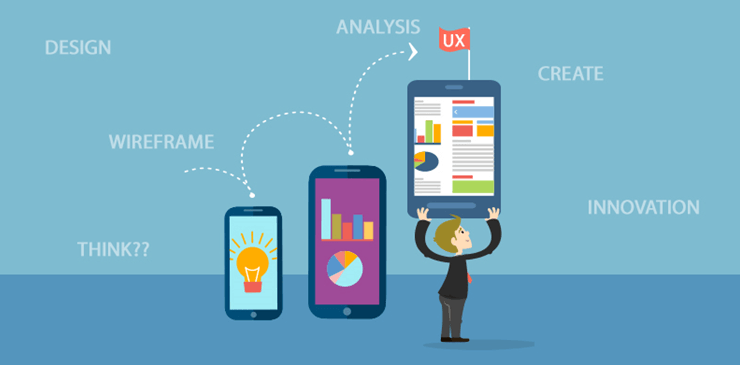We all know that designing an app requires a lot of time, and the process could become tiring, long, and frustrating. We’ve worked on multiple projects and know that sometimes it could be tough to design a perfect app, but adequate communication and the right approach can easily resolve this issue.
As experts in the field of game development , we suggest you take a good look at these steps and try to apply them to your process to make things work faster and more accurately. The UI/UX processes include everything from designing to testing and functionality.
THE RESEARCH
The extensive research is the first part and serves as the foundation for building an efficient mobile application . First, the design team spends adequate time understanding the market and target audience. Next, they study the apps similar to the one they are developing, aka the competitors.
The research team analyzes every minute detail and looks for loopholes they can improve or what features aren’t necessary and can be removed from the design. The research involves studying multiple apps and reading customer and critic reviews.
Then the strategy is analyzed, how the competitors are using functionalities and researching the latest trends in the market.
ANALYSIS
After the research is completed, the analysis starts. It is important to know the reasoning behind a customer’s need. In the analysis phase, the research is converted into substantial material, which is later applied during the design phase.

The analysis includes creating a buyer persona that helps identify the customer’s needs and creating a user story that motivates the users to use the application.
DESIGN
Design is broken down into two parts, i.e., Wireframe and Prototyping.
Wireframes are the basic layout that outlines all the functions of an app’s design. Developers start with the minimal designs and then gradually enhance them further. Wireframes are the most important factor of the UX design because they provide a preview of what your application would look like.
Let’s talk about the second part of the design, “Prototyping.” A prototype is often referred to as the sample version or a toned-down version of the final app. You might have seen or used Beta versions of the app; think of a prototype as a couple of stages before the beta version. A prototype has most of the essential functions but is not yet ready to be introduced to the masses. It has enough functions to showcase how it works but not all the tools that customers may require. It is quite useful when testing designs that lead to our next subject.
TESTING
Testing is the assessment of each function and accessibility that has been incorporated into the application. Testing is a continuous process that begins from the very start. The testing occurs after each phase and between phases to ensure everything is seamless. It saves a lot of time and prevents you from making eleventh-hour changes.
These are the four essentials you should practice every time you develop a Mobile Application.

